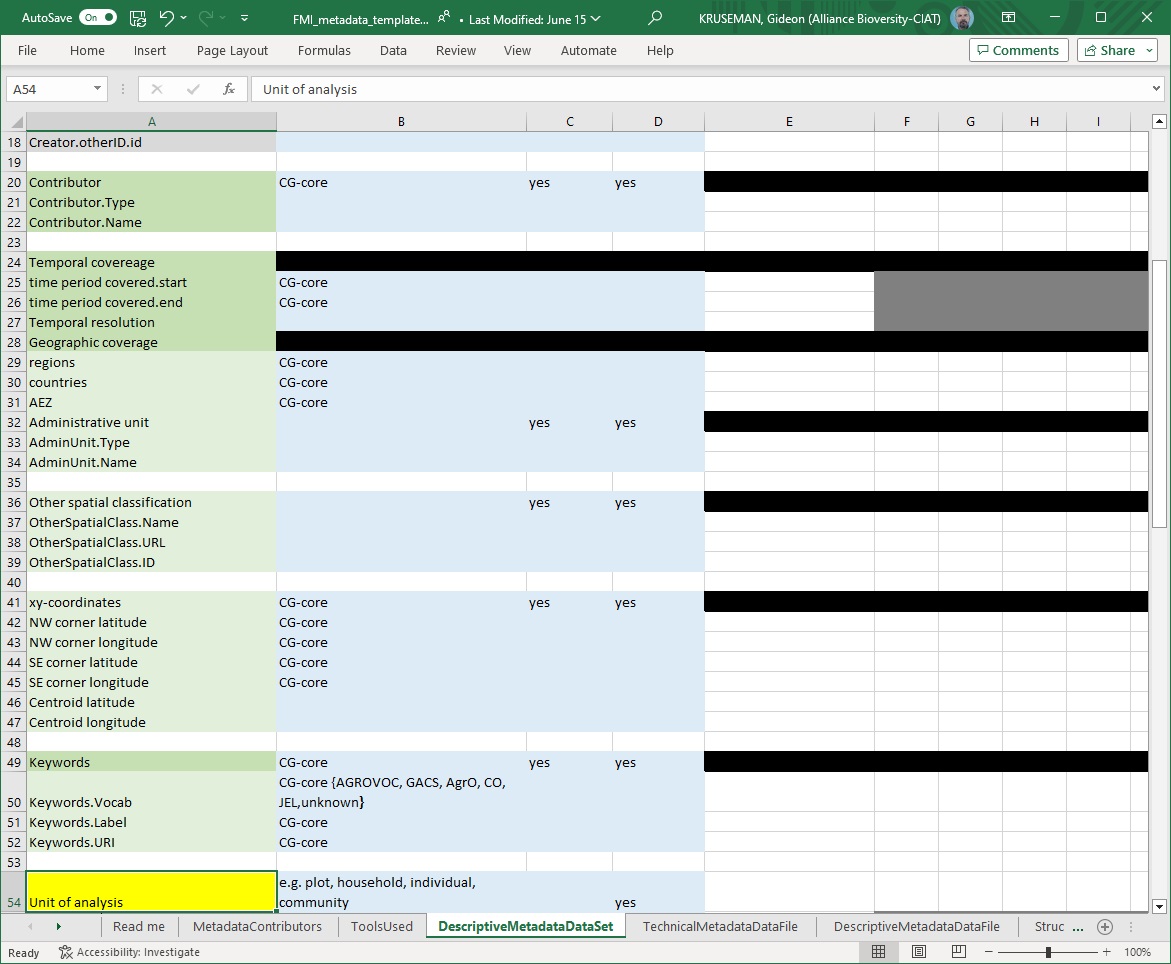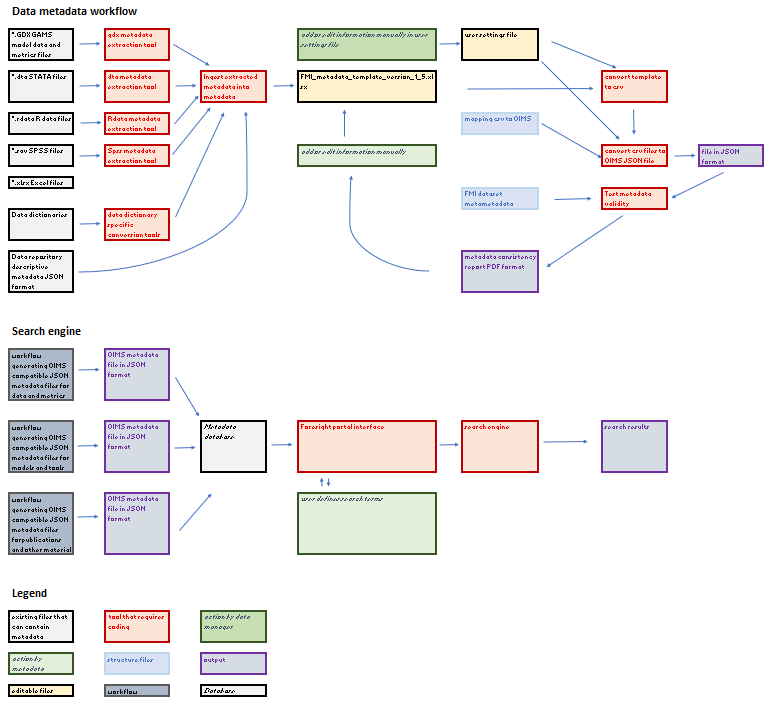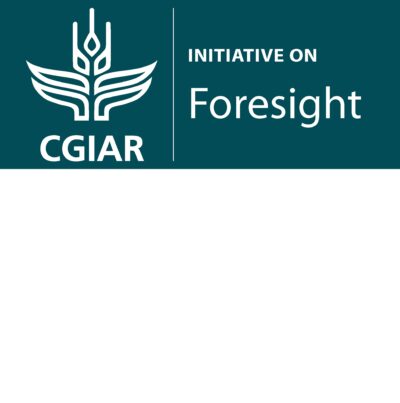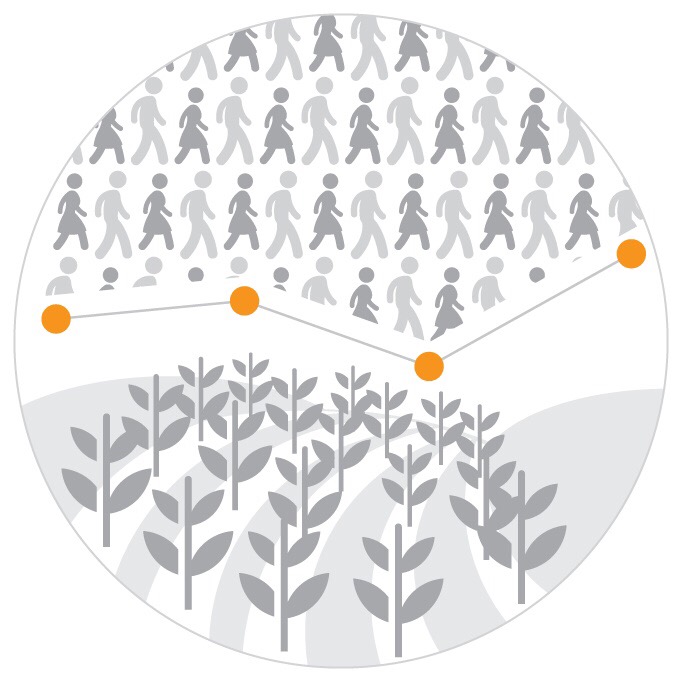Open Ontology-Based Interoperable Information Asset Metadata Schema
version: 2.4
Brief model summary
The Open Ontology-Based Interoperable Information Asset Metadata Schema (OIMS) is an approach aimed at making various information assets, like datasets, documents, and tools, more accessible, transparent, and reusable. To understand the importance of OIMS, let’s first discuss some basic concepts.
In our data-driven world, we often deal with large amounts of information. To make sense of this information and use it efficiently, we need metadata. Metadata is like a label or a description that provides details about the data itself, making it easier to find, understand, and use. To address these challenges, the OIMS approach focuses on standardizing the metadata’s structure, rather than the data itself. Think of it as creating a common language for describing data, even if the data comes from different sources or domains. This common language helps ensure that the metadata remains flexible and adaptable, even as new attributes or changes occur over time.
OIMS addresses the challenge of managing data in agriculture’s data-driven landscape. It provides a flexible schema for standardizing and organizing metadata of diverse information assets like datasets, documents, and models. By establishing a common language for data description, OIMS improves accessibility and reusability. Specialized metadata often lacks standardization, leading to inconsistencies. OIMS tackles this by standardizing the metadata and meta-metadata structure, ensuring long-term flexibility.
The OIMS schema consists of a header section containing information about underlying metadata schemas and descriptors, while the content section enables consistent representation of metadata components. OIMS is being utilized by the CGIAR Platform for Big Data in Agriculture and the One CGIAR initiative on Foresight, enhancing the democratization of foresight analysis.
Read more
Some efforts have been made to standardize general descriptive metadata, like DataCite and Dublin Core. However, more specialized metadata often lacks standardization, leading to inconsistencies across different data sources. This is where OIMS comes in, offering a standardized structure for the “metadata of the metadata.”
In simpler terms, the OIMS approach is like creating a universal system for organizing information about data, regardless of where it comes from or how it’s structured. By having a consistent way to describe and manage metadata, it becomes easier for people and organizations to share, understand, and reuse information assets in a more efficient manner.
The Foresight Initiative aims to provide stakeholders with access to cutting-edge tools, data, and metrics related to food, land, and water systems under various future scenarios. It is particularly important for countries with emerging foresight capacities and other relevant partners to enhance their knowledge, skills, and proficiency in these areas. Access to innovative training, delivery platforms, and collaborative research are crucial components of this initiative.
To achieve these goals, it is essential that foresight materials, such as models, tools, data, and metrics, are organized with rich, interoperable metadata that makes them easily discoverable, accessible, and reusable. The Open Ontology-Based Interoperable Information Asset Metadata Schema (OIMS) approach to metadata management can significantly improve the efficiency and effectiveness of foresight analysis.
However, unlocking the full potential of transparent and interoperable research data information assets requires collaboration from asset holders, such as data managers and modeling groups. They need to provide key information about their data and tools using standard metadata templates that are easy to use and understand. This allows for seamless integration of their contributions into the Foresight Initiative.
If existing metadata is already available, the OIMS workflow can help ingest it into the system, prepopulating metadata templates and identifying any gaps that need to be filled. This process requires that both existing metadata sources and metadata templates are described using the OIMS schema.
The OIMS toolbox provides user-friendly tools for technical teams to build these schemas with relative ease. By implementing the OIMS approach to metadata management, the Foresight Initiative can foster enhanced collaboration and knowledge-sharing among stakeholders, ultimately accelerating the development and implementation of effective solutions for food, land, and water systems at national, regional, and global levels.

Example
Foresight data template
While OIMS is both machine readable and human intelligible, the schema in JSON format may not be the easiest way to provide information. Therefore, we developed a spreadsheet-based template to collect the relevant information in a user friendly way. A conversion tool puts it into the JSON format and checks metadata consistency.
Model workflow
The OIMS workflow provides a systematic approach to implementing the Open Ontology-Based Interoperable Information Asset Metadata Schema in a project. It involves using the provided resources, such as the high-level OIMS structure JSON template and the self-describing metadata schema, to create standardized metadata for your project.
By following this OIMS workflow, you can create a well-organized and interoperable metadata management system that enhances the discoverability, accessibility, and reusability of your project’s information assets. This, in turn, fosters greater collaboration and knowledge-sharing among stakeholders, ultimately leading to more efficient and effective solutions for the challenges your project seeks to address.
read more about the OIMS workflow
- Develop schemas: Use the high-level OIMS structure JSON template as a starting point for creating metadata schemas specific to your project. These schemas will serve as the foundation for organizing and describing your data, tools, and models in a standardized way.
- Validate metadata files: To ensure that your metadata files are OIMS-compatible, use the provided JSON.schema file. This file will help validate the structure and content of your metadata files in JSON format. Keep in mind that JSON.schema cannot cover all validation scenarios, so some additional validation tools may needed. Some tools are currently under developmentothers need to be flagged as needed to be developed.
- Create metadata: With your schemas and tools in place, generate metadata for your project’s information assets, such as datasets, models, tools, and related documents. Remember to use the self-describing metadata schema as the basis for organizing and describing these assets.
- Identify and fill gaps: As you create metadata for your project, you may come across instances where existing metadata is incomplete or missing. Use the OIMS workflow to identify these gaps and fill them with the appropriate information, ensuring a comprehensive and standardized metadata collection.
- Integrate and share assets: With your metadata files validated and complete, you can now integrate them into the OIMS system. This will make your project’s information assets easily discoverable, accessible, and reusable by other stakeholders. The OIMS system facilitates seamless interoperability between different data sources and domains, allowing for greater collaboration and knowledge-sharing among various parties involved in the project.
- Maintain and update metadata: As your project evolves, new data, models, and tools may be added, or existing assets may be updated. Ensure that the metadata is regularly maintained and updated to reflect these changes. This ongoing process is crucial for keeping the OIMS system accurate and up-to-date, allowing stakeholders to have continued access to the most relevant and current information.
- Expand and adapt schemas: As the project grows and new information assets emerge, the metadata schemas may need to be expanded or adapted to accommodate these new elements. Keep the OIMS structure flexible and adaptable, and update the schemas and tools accordingly to maintain the standardized and interoperable nature of the system.

Workflow diagram
Software requirements
OIMS is a JSON-based metadata schema.
Accessibility
The OIMS resources can be found on the OIMS GitHub Repository which is part of the Foresight Initiative GitHub Repository
Annotated references
Kruseman, G. (2022). A Flexible, Extensible, Machine-Readable, Human-Intelligible, and Ontology-Agnostic Metadata Schema (OIMS). Frontiers in Sustainable Food Systems, 6.
Kruseman G., LaPorte M.-A. 2023. A Flexible, Extensible, Machine-Readable, Human-Intelligible, and Ontology-Agnostic Metadata Schema (OIMS) version 2.4. https://hdl.handle.net/10568/135656
Acknowledgements
OIMS was originally developed with funding from the CGIAR Platform for Big Data in Agriculture (Kruseman, 2022). As of 2022, the maintenance, further development, documentation and enhanced accessibility of OIMS is financially supported by the One CGIAR initiative on Foresight and Metrics for the Transformation of Food, Land and Water Systems (FMI). CGIAR is a global research partnership for a food-secure future, dedicated to transforming food, land, and water systems in a climate crisis. We would like to thank all funders who supported this research through their contributions to the CGIAR Trust Fund: https://www.cgiar.org/funders/.


Community of practice on socio-economic data
CGIAR Platform for Big Data in Agriculture
